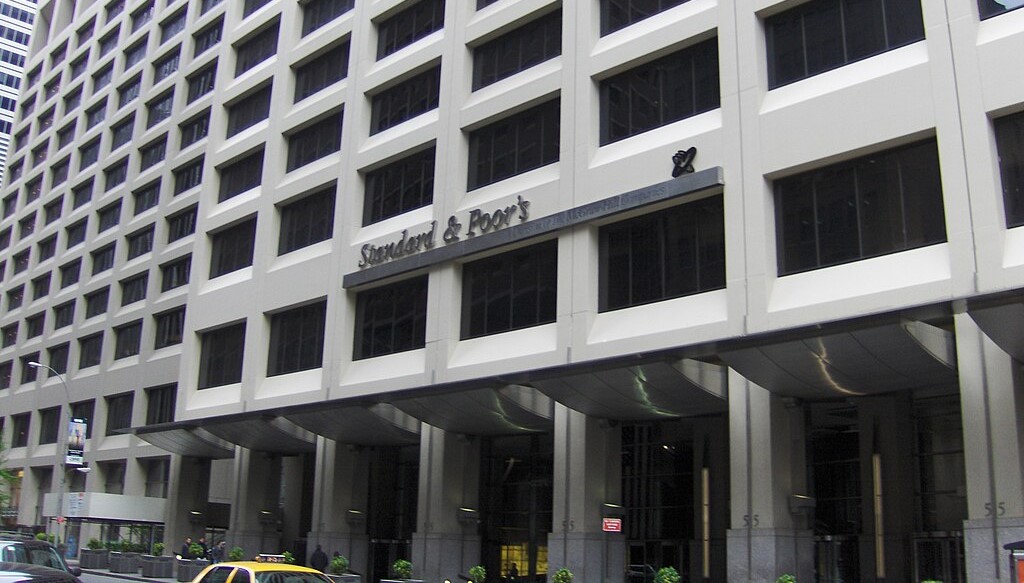The S&P 500 fell sharply on Tuesday, closing below 5,000 points for the first time in nearly a year, as optimism faded over any delay or softening of U.S. tariffs ahead of a key deadline. The index dropped 1.57% to 4,982.77, losing $5.83 trillion in market value over four days—its steepest decline since its inception in the 1950s. This 12% drop marks the largest four-day percentage loss since the early days of the COVID-19 pandemic.
Markets initially rallied more than 4% on Tuesday morning, fueled by hopes that former President Donald Trump would reconsider the tariff hike. However, White House press secretary Karoline Leavitt confirmed that the tariffs, including a 104% hike on Chinese imports, would go into effect as scheduled. China responded, rejecting the “blackmail” nature of the threats.
Investor sentiment turned sharply negative, with the Dow dropping 320.01 points to 37,645.59 and the Nasdaq sliding 335.35 points to 15,267.91. The CBOE Volatility Index spiked to 52.33, its highest since March 2020, indicating rising fear among investors.
Federal Reserve officials, including San Francisco Fed President Mary Daly, urged caution against rushing rate cuts despite market turmoil, citing a strong U.S. economy and policy uncertainty.
Earnings season begins later this week with major banks like JPMorgan and Wells Fargo set to report. Analysts expect corporate guidance to highlight concerns over the new tariffs’ long-term impact.
Meanwhile, health insurers UnitedHealth and Humana surged 5.4% and 10.7% respectively, following a government decision to raise 2026 Medicare Advantage payment rates by 5.06%.
Market breadth was overwhelmingly negative, with declining stocks outpacing advancers on both the NYSE and Nasdaq. Trading volume surged, with over 23 billion shares changing hands.



 Silver Prices Surge to New Record Above $60 as Supply Concerns and Fed Expectations Boost Demand
Silver Prices Surge to New Record Above $60 as Supply Concerns and Fed Expectations Boost Demand  Asian Stocks Rally as Tech Rebounds, China Lags on Nvidia Competition Concerns
Asian Stocks Rally as Tech Rebounds, China Lags on Nvidia Competition Concerns  Oil Prices Rebound in Asia as Venezuela Sanctions Risks Offset Ukraine Peace Hopes
Oil Prices Rebound in Asia as Venezuela Sanctions Risks Offset Ukraine Peace Hopes  Asian Stocks Slip as Oracle Earnings Miss Sparks AI Profitability Concerns
Asian Stocks Slip as Oracle Earnings Miss Sparks AI Profitability Concerns  US Signals Openness to New Trade Deal as Brazil Shows Willingness, Says USTR Greer
US Signals Openness to New Trade Deal as Brazil Shows Willingness, Says USTR Greer  Global Forex Markets Brace for Fed Decision as Yen Extends Weakness
Global Forex Markets Brace for Fed Decision as Yen Extends Weakness  Gold Prices Dip as Markets Absorb Dovish Fed Outlook; Silver Eases After Record High
Gold Prices Dip as Markets Absorb Dovish Fed Outlook; Silver Eases After Record High  Hong Kong Cuts Base Rate as HKMA Follows U.S. Federal Reserve Move
Hong Kong Cuts Base Rate as HKMA Follows U.S. Federal Reserve Move  Wall Street Futures Slip as Oracle Earnings Miss Reignites AI Spending Concerns
Wall Street Futures Slip as Oracle Earnings Miss Reignites AI Spending Concerns  Brazil Holds Selic Rate at 15% as Inflation Expectations Stay Elevated
Brazil Holds Selic Rate at 15% as Inflation Expectations Stay Elevated  Indonesia–U.S. Tariff Talks Near Completion as Both Sides Push for Year-End Deal
Indonesia–U.S. Tariff Talks Near Completion as Both Sides Push for Year-End Deal  Gold Prices Hold Firm as Markets Await Fed Rate Cut; Silver Surges to Record High
Gold Prices Hold Firm as Markets Await Fed Rate Cut; Silver Surges to Record High  U.S.-Indonesia Trade Deal Faces Uncertainty as Jakarta Reconsiders Key Commitments
U.S.-Indonesia Trade Deal Faces Uncertainty as Jakarta Reconsiders Key Commitments  Asian Currencies Steady as Fed Delivers Hawkish Rate Cut; Aussie and Rupee Under Pressure
Asian Currencies Steady as Fed Delivers Hawkish Rate Cut; Aussie and Rupee Under Pressure  Fed’s Dovish Tone Sends Dollar Lower as Markets Price In More Rate Cuts
Fed’s Dovish Tone Sends Dollar Lower as Markets Price In More Rate Cuts  Modi and Trump Hold Phone Call as India Seeks Relief From U.S. Tariffs Over Russian Oil Trade
Modi and Trump Hold Phone Call as India Seeks Relief From U.S. Tariffs Over Russian Oil Trade  Oil Prices Edge Higher as U.S. Seizes Sanctioned Venezuelan Tanker
Oil Prices Edge Higher as U.S. Seizes Sanctioned Venezuelan Tanker 






























